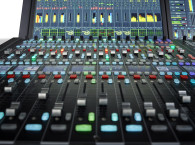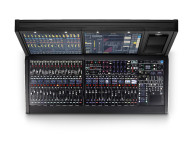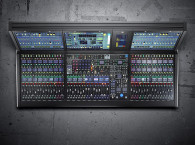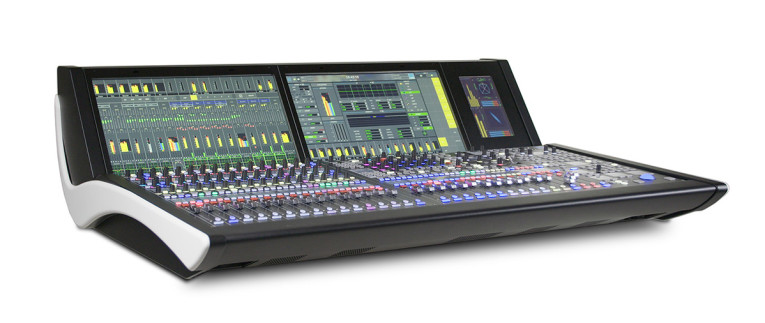
The new mc²56 marks a further step in the evolution of a mixing console that dominates the audio production industry with hundreds of units in operation around the world. The new mc²56 incorporates groundbreaking features drawn from Lawo’s mc²96 flagship console without sacrificing the identity of its predecessors – retaining the compact size, flexibility and versatile design that address applications ranging from broadcast trucks and studios to live performance and recording.
Optimized for IP video production environments, the new mc²56 has full native support for SMPTE 2110, AES67/RAVENNA and DANTE. Its established best-in-class networking performance rises to the next level with the addition of unique capabilities such as IP-Share gain compensation and DSCA Dynamic Surface to Core Allocation.
Available in frames from 16 to 112 faders, the mc²56 supports up to 8,192 x 8,192 crosspoints, 888 DSP channels, 144 summing buses and 128 aux buses at 44.1 to 96kHz operation. In addition to Button-Glow and colored touch-sensitive encoders, new color-TFTs provide clearer color-coding of channel strips for enhanced visibility and faster access in low light conditions, while Lawo’s revolutionary LiveView provides thumbnail previews of video streams directly in the fader labeling displays. With a 64-fader surface suited to most OB vehicle dimensions, a 16-fader stand-alone extender may be added to an mc²56 for subsequent expansion at any time.
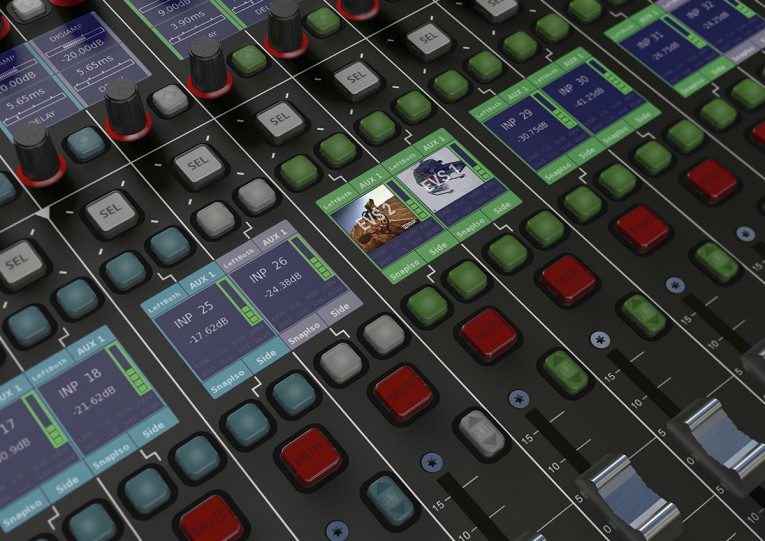
The new mc²56’s extended free control section gives direct access to four parameters in addition to gain control for perfect balance between de-centralized and centralized control workflows. The console allows both global and individual parameter assignments to the free controls of each channel strip.
Additionally, the console’s overbridge with state-of-the-art capacity sensing 21.5” full HD touchscreens contains two slots for individual user panels, which can be populated from a choice of five options – 40 additional buttons, a TC automation panel, a dedicated Reveal Fader panel, a RTW TM7 Goniometer or a RTW TM9 Goniometer (occupying both slots).
Originally requested for broadcast applications, the console’s built-in loudness metering is also useful in live, theater and house of worship applications, providing full loudness control in accordance with ITU 1770 (EBU/R128 or ATSC/A85) with peak and loudness metering either separately or in combination.

Among the console’s broadcast highlights are multi-user operation, advanced mix assist systems (AutoMix, UpMix, DownMix, optional: Lawo KICK), comprehensive Audio-Follow-Video functionality, integrated 3D/Immersive mixing tools (a dedicated elevation controller is standard) and parallel compression. In recording applications, it offers dynamic time-code automation, Lawo-grade microphone preamps and processing, Machine/DAW remote control and a fully customizable signal chain with four independent dynamic modules. For the performing arts, the console includes Selective Recall, Oversnaps (relative trim-sets), comprehensive theater automation cue list including multiple triggers (MIDI, GPIO, LTC), Waves SoundGrid and Neumann DMI-8 digital microphone integration, and mirror-console operation.
The console’s local I/O provides two IP network interfaces for redundant connection of the surface’s local I/O to the Nova73 router following the SMPTE2022-7 hitless merge principles of stream and port redundancy. Comprehensive local I/O includes 16 Lawo-grade Mic/Line inputs, 16 Line outputs, eight AES3 inputs and outputs, eight GPIOs plus a local MADI port (SFP).
And Lawo’s mc²56 is not limited to a stand-alone operation, but has been designed from the ground up for networking in complex production infrastructures via IP (SMPTE2110, RAVENNA/AES67, DANTE) or MADI. When using shared DALLIS I/Os, Lawo’s unique IP-Share Network Gain Compensation prevents unexpected gain changes for up to eight networked consoles when individual users are adjusting their gain settings. The DALLIS I/O communicates with all networked consoles and its IP-Share algorithm sets the optimum analog gain for multi-client requirements. IP-Share additionally ensures that the corresponding gain compensation is applied to the digital gain stages of all consoles when the analog gain of the preamp is being adjusted.
All Lawo products are developed in Germany and manufactured according to highest quality standards at the company’s headquarters in the Rhine valley town of Rastatt, Germany.
www.lawo.com




